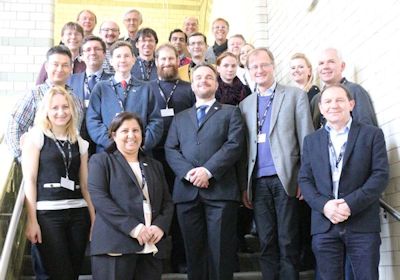European Antimatter R&D network launched

The Accelerators Validating Antimatter physics (AVA) project started officially on the 1 January 2017. AVA is an international collaboration of currently 25 institutions, benefiting from almost 4 m€ of funding from the European Union. AVA will train no less than 15 early stage researchers over the next four years to carry out research into facility design and optimization, development of advanced Beam Diagnostics, and novel Antimatter experiments. Each researcher employed within the project will also follow a highly innovative training program.
All project partners now gathered for the Kick-off Meeting organized on 11th - 13th January 2017 at the University of Liverpool that also leads the project from the Cockcroft Institute. Representatives from all partner Institutions presented summaries of their anticipated contributions and details about their research projects.
Professor Carsten P. Welsch, Head of the University of Liverpool’s Dept. of Physics, based at the Cockcroft Institute, and coordinator of AVA, chaired the meeting, together with his dedicated EU TEAM introduced the partners to the specific rules and regulations of the Horizon 2020 framework, the detailed project time plan, milestones and deliverables, planned project events and the network wide communication and outreach plans.
Professor Carsten Welsch said: “We had a very positive atmosphere during the entire meeting and many productive discussions around research projects, fellows’ recruitment and training events. All partners are looking forward to the many opportunities AVA will provide.”
Research Fellows within AVA will have the opportunity to work at the forefront of science, participate in numerous training events and benefit from networking and various collaboration opportunities.
The AVA network is currently looking for candidates for its 15 vacant Fellowship positions at institutions across Europe. The application deadline is 31st January 2017.
This project has received funding from the European Union’s Horizon 2020 research and innovation programme under the Marie Skłodowska-Curie grant agreement No 721559.